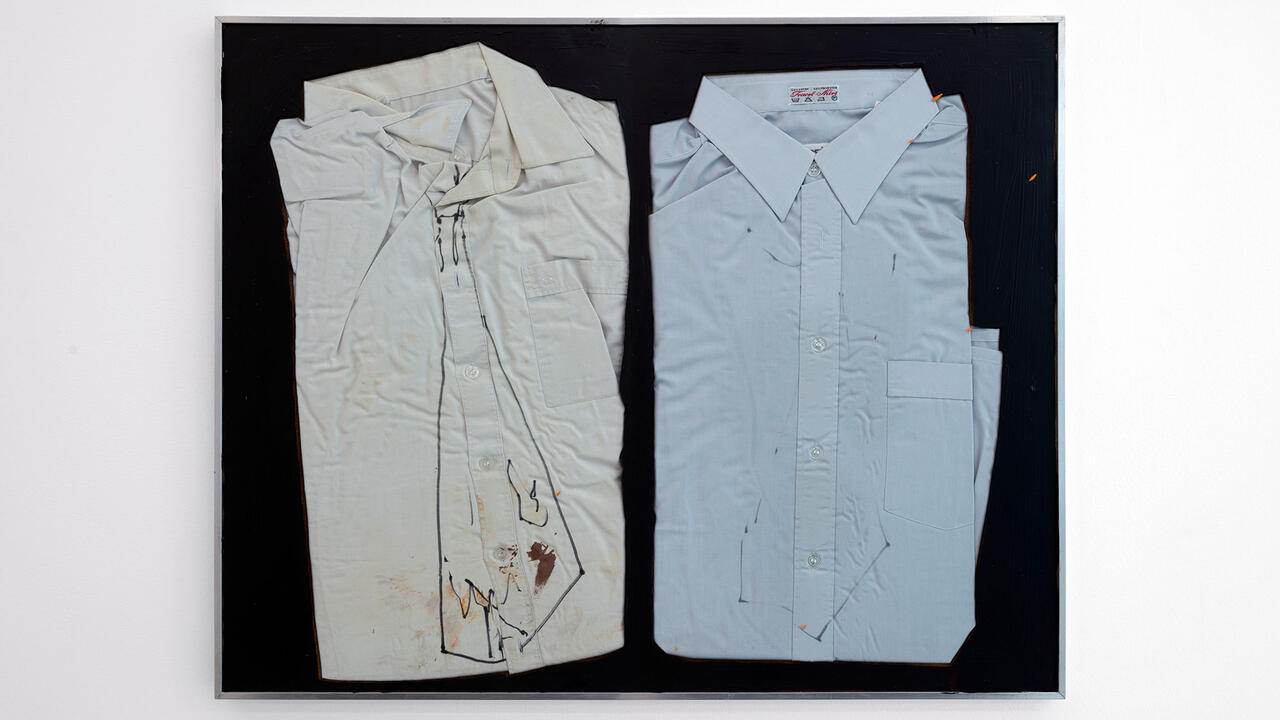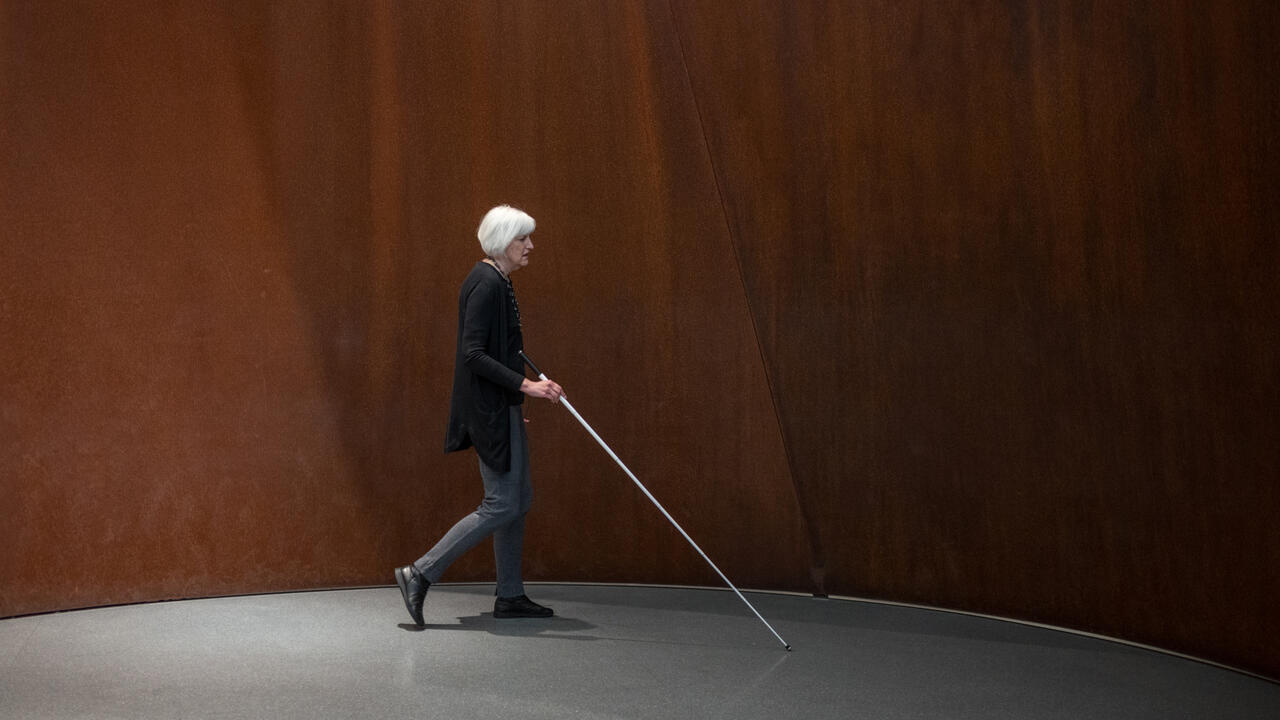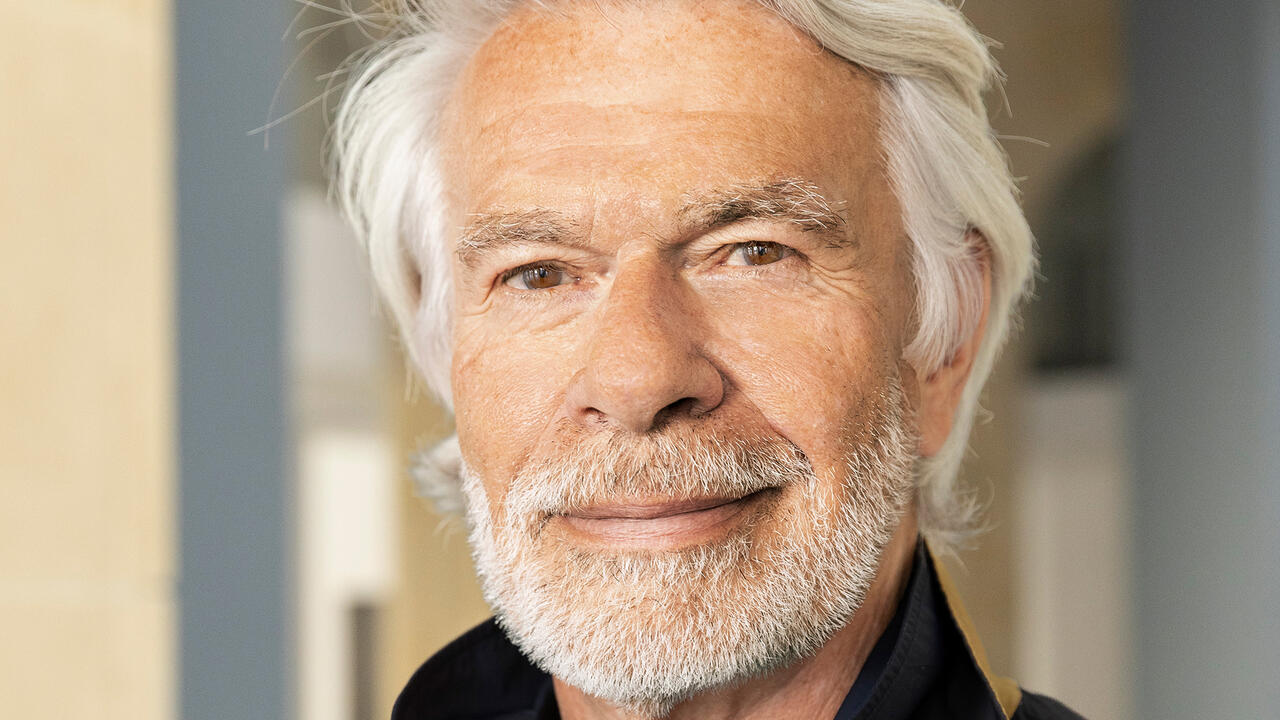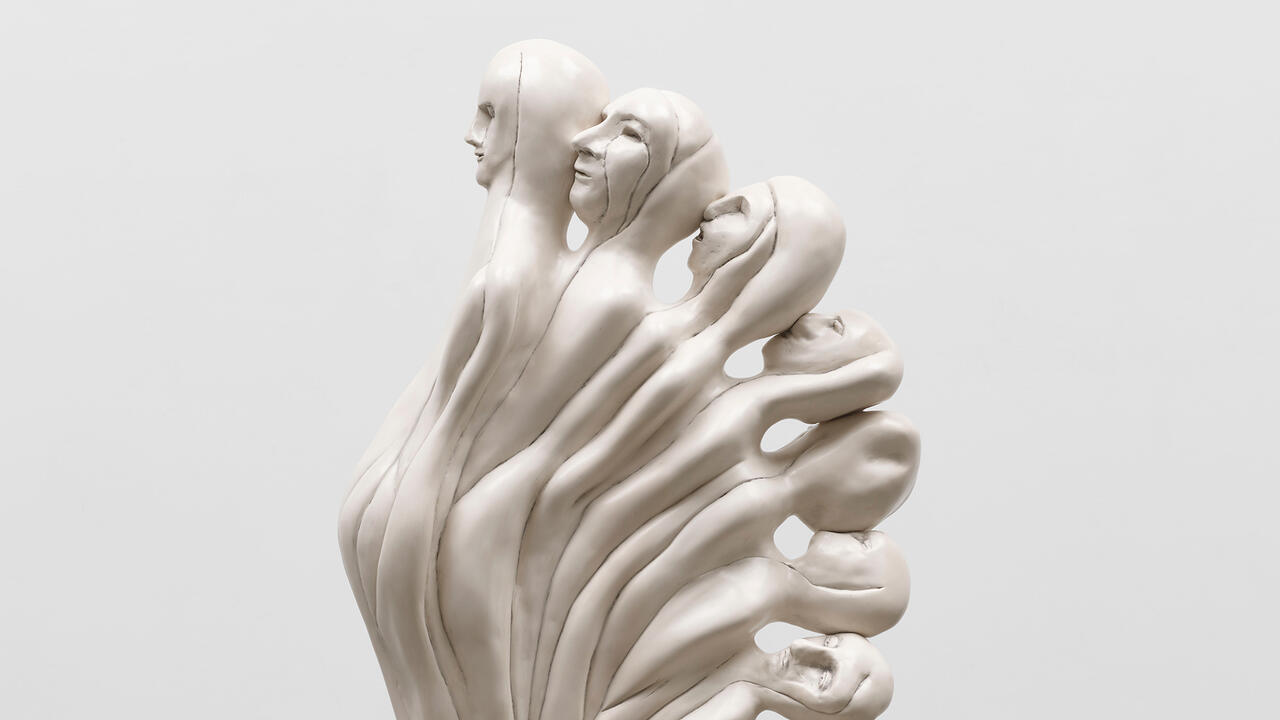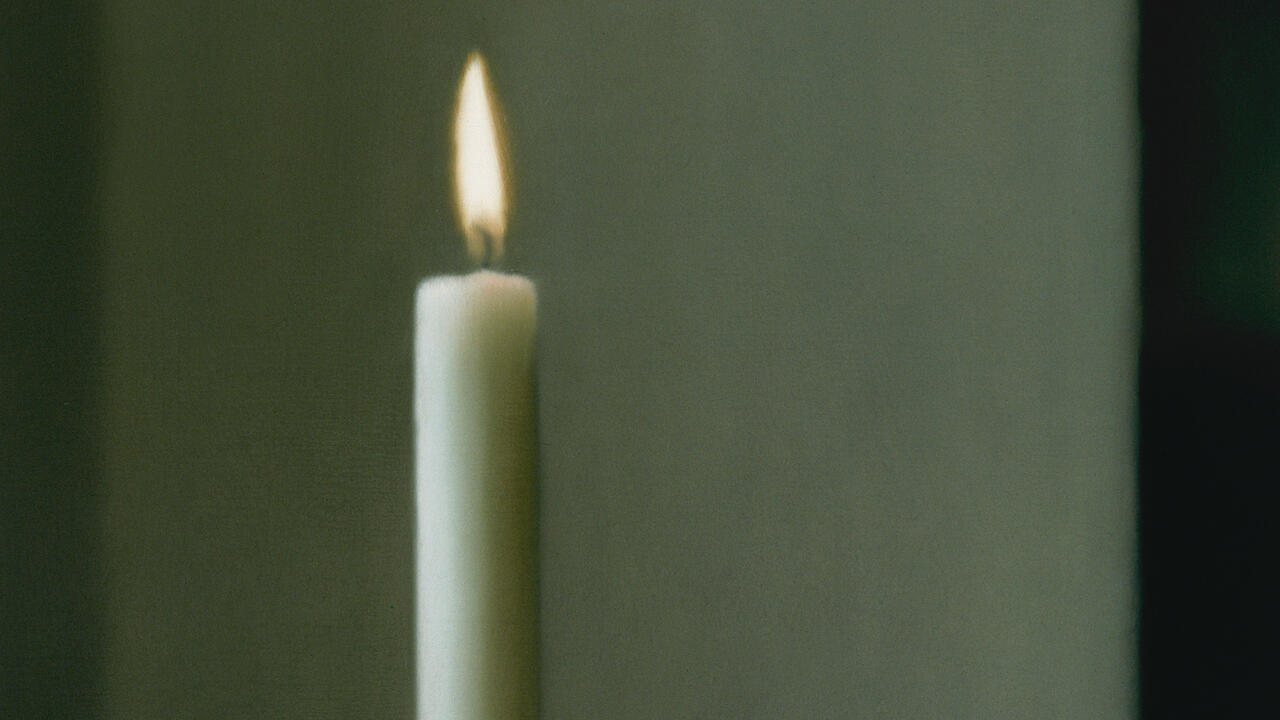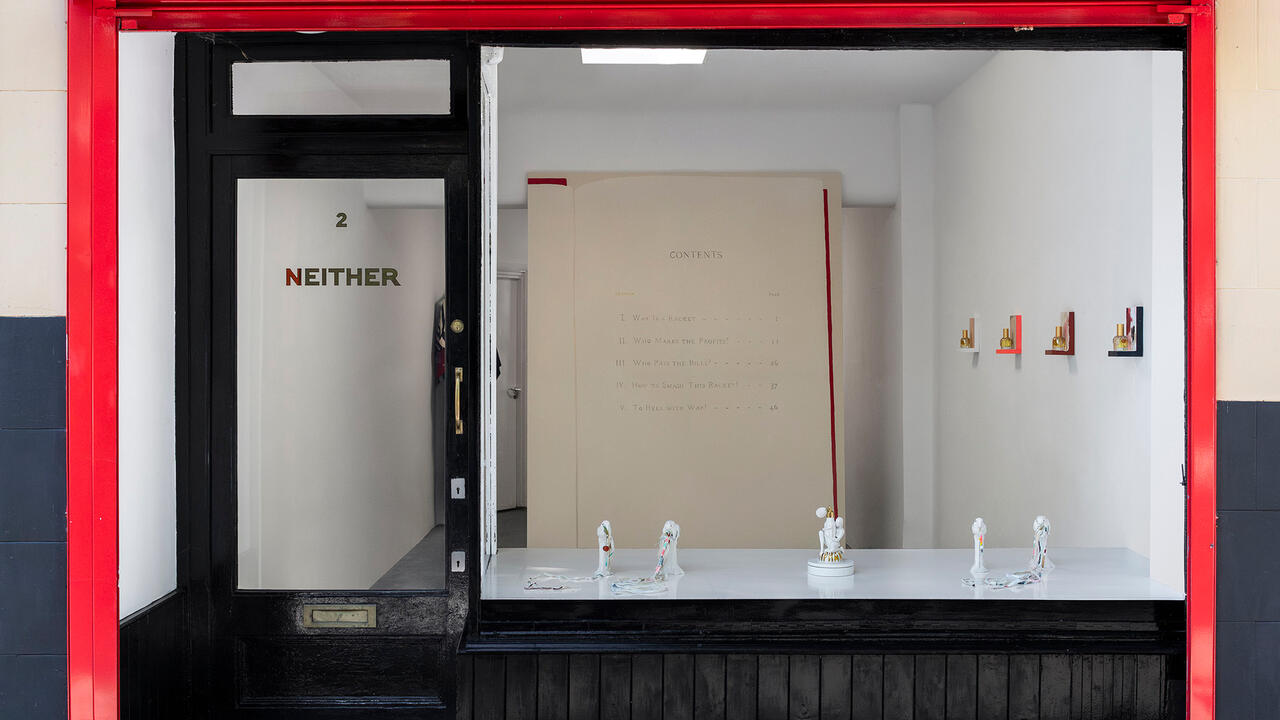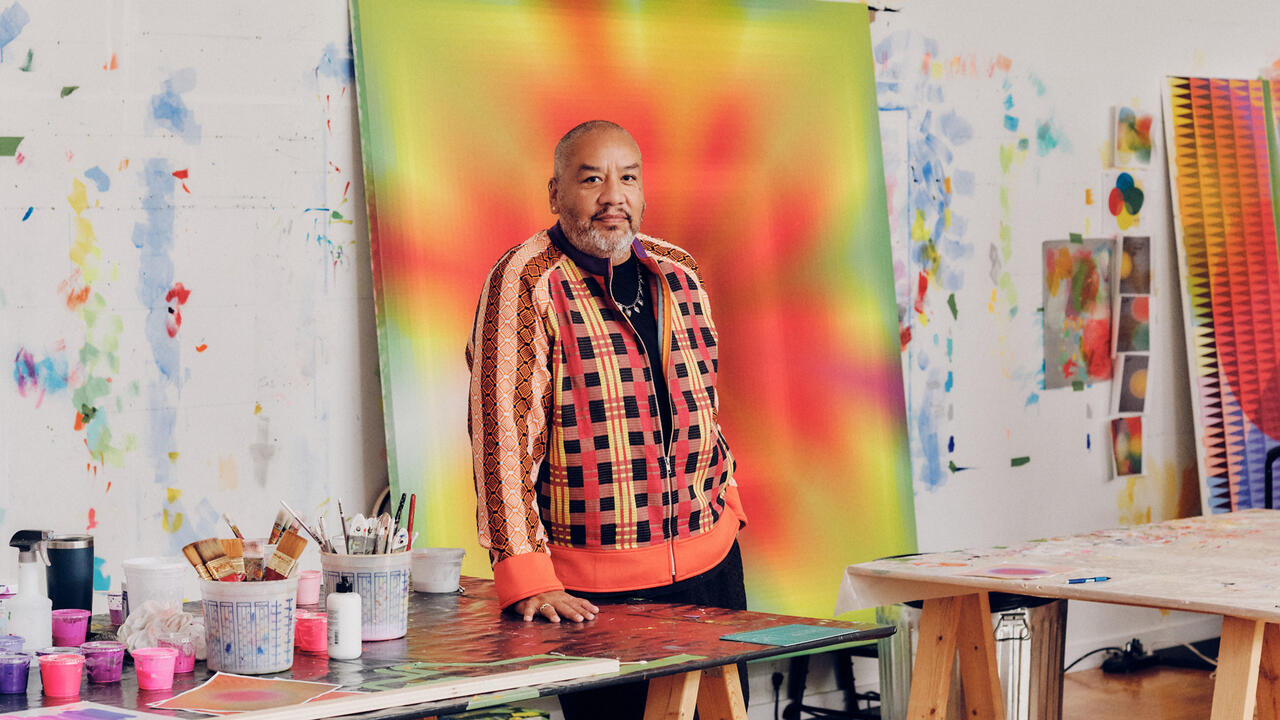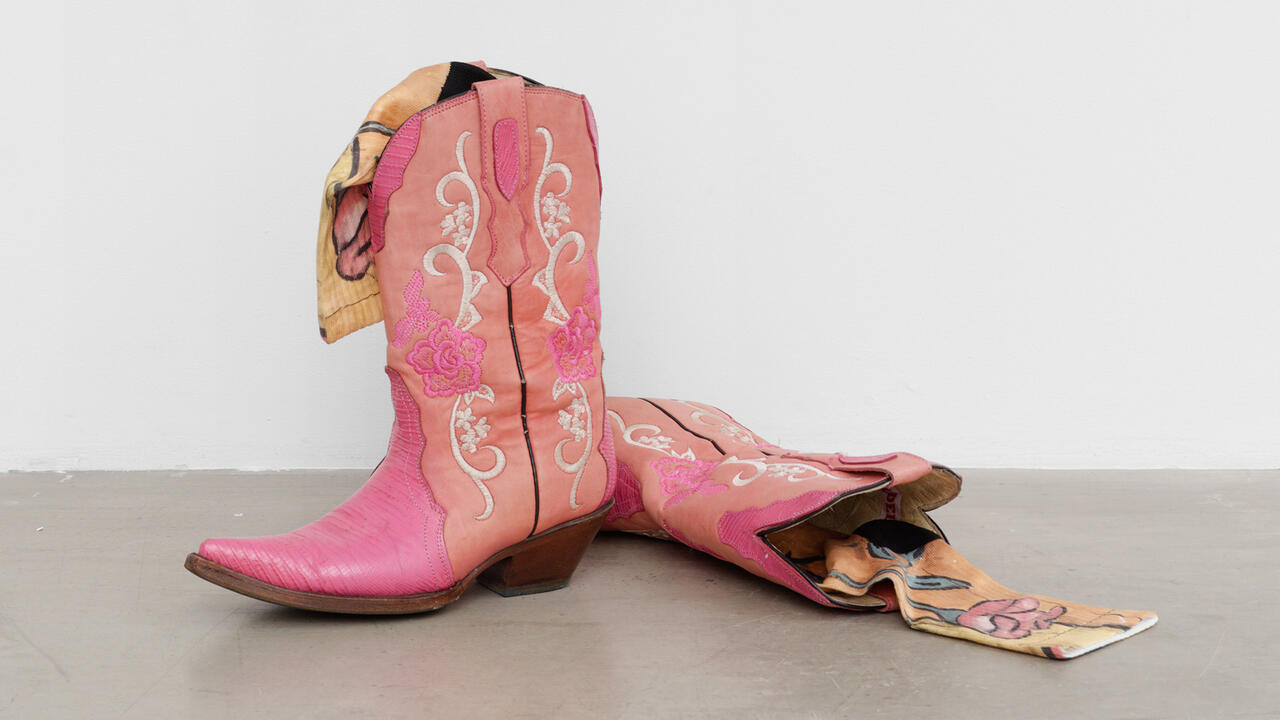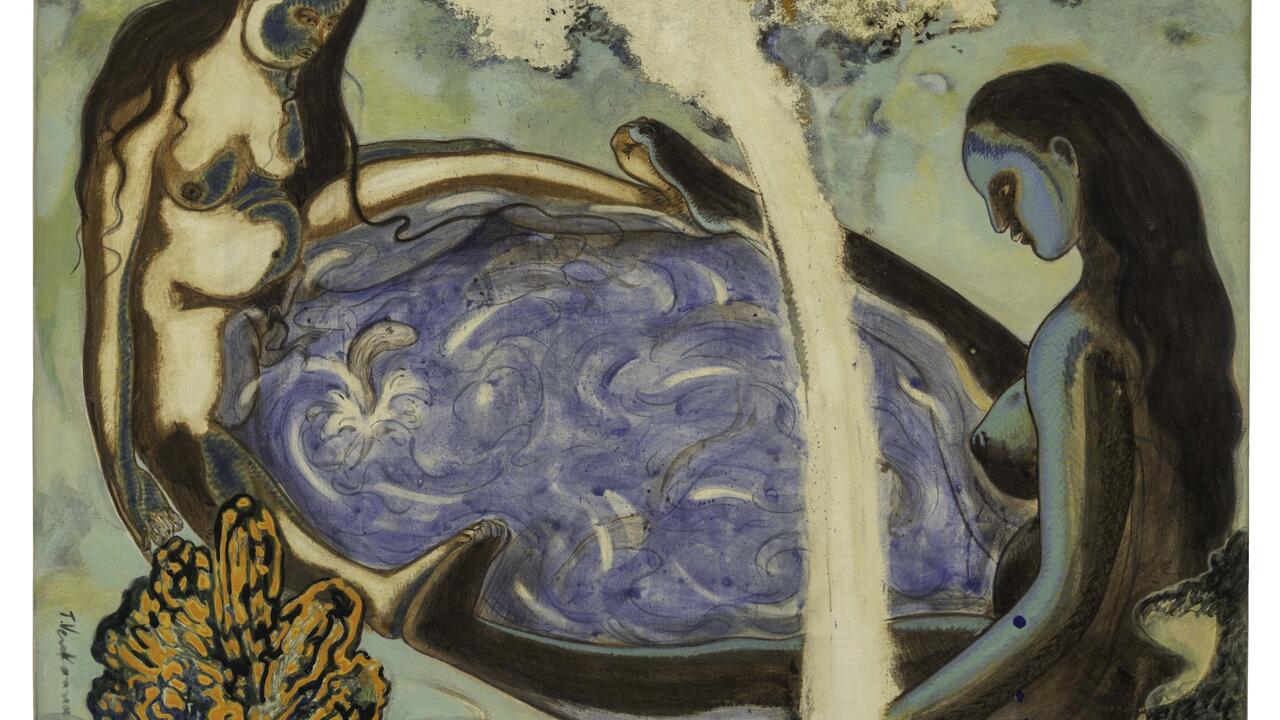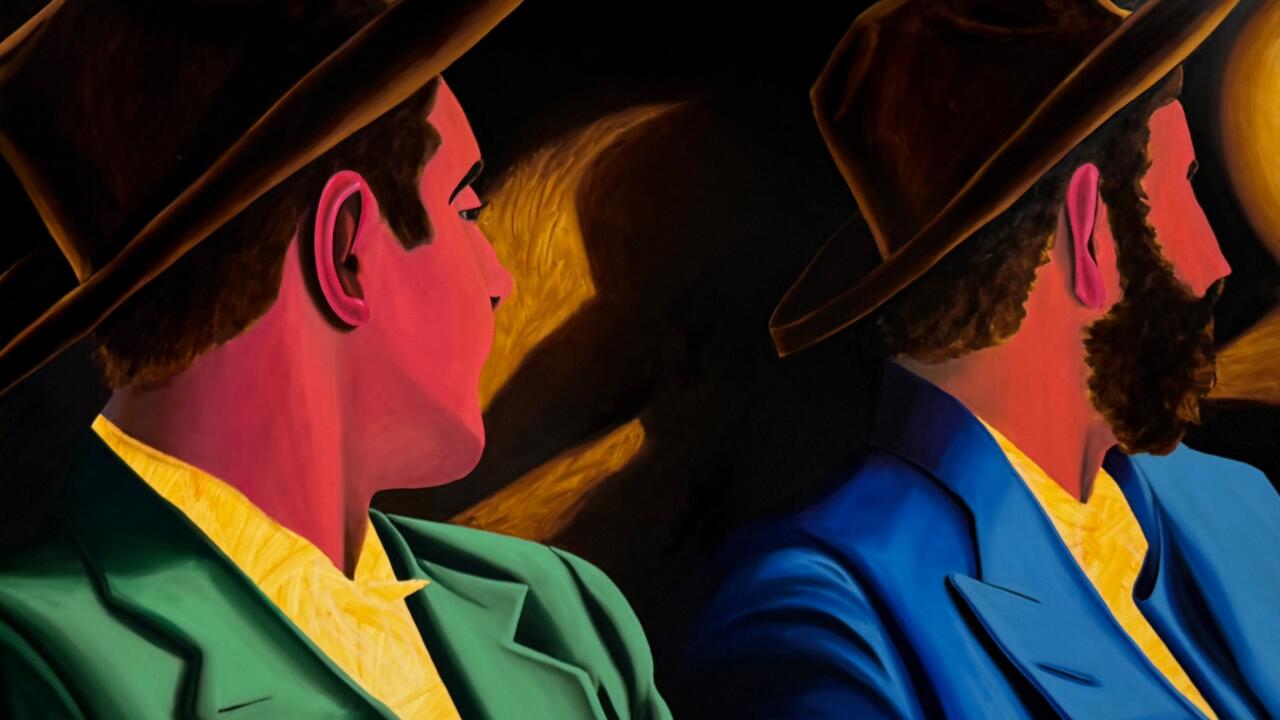Bharti Kher
Galerie Perrotin, Paris, France
Galerie Perrotin, Paris, France

The London-born, New Delhi-based artist Bharti Kher is a mistress of visual contradiction. Whether sculpture, painting or installation, her work is created from an unlikely harmony of seemingly dissenting parts; delicately wrought, fine calibration always belies a weighty material or conceptual presence.
Kher’s recent exhibition, ‘The laws of reversed effort’, felt distinctly anthropological. A trifecta of sculptures that greeted viewers in the first gallery exuded the fine mist of age, their elements gently patinated like some ancient unearthed human artifacts. Their presentation in this space for contemporary art felt like a gift from the past; an opportunity, perhaps, to learn something about our own beginnings.

Each structure features a waist-high cylinder of grey cement upon which Kher has cleverly balanced a concise arrangement of found objects. In Still life (all works 2016), a stone fulcrum supports a wooden cane perched in horizontal equilibrium, one end bearing the weight of two small ceramic jugs hanging by a length of rope. When darkness becomes light does justice to the biblical gravitas of its title: a granite sledgehammer is perfectly poised on the peak of a rounded stone, suggesting some primordial genesis.
In the next room, Kher expanded the meticulous tension of these sculptures in scale. Equilibrium 2, 3 and 4 evoke gargantuan wooden compasses, suspended from the ceiling by rope pulleys and anchored to the severed base of stone columns. Held in precarious stasis, the point of each wooden object barely grazed the floor. The striking visual contrast between their crude materials (dimpled stone, cracked ceramic, fraying yellowed rope) and delicacy suggests the capricious nature of human inquiry, from the tools we consider empirical to the scientific conclusions we reach.

Other works in the show were similarly shaped by Kher’s incisive, sometimes cynical sensibility. Seen from afar, the black and white striations of Heriodes V appear to constitute a woven wall hanging, perhaps once a rug that bore the footsteps of our ancestors. Accompanying this perception is the insinuation of female hands at work: this is echoed by the work’s title. Heriodes V references the fifth chapter in Ovid’s collection of epistolary poems, which offers an account of the suffering endured by numerous abandoned heroines – embodying another traditional role played by females, that of the eternally faithful wife.
A closer look at the piece, however, reveals that it is not woven at all, but rather constructed from thousands of bindis stuck to a white board. Taken out of its traditional context, this sacred Hindu symbol – one of Kher’s signature materials, and one that is worn exclusively by women – is emptied of its spiritual power to communicate anything about the identity of its wearer, specifically her marital status, and is reduced to superficial decoration. This is a bold, even brazen, gesture, and highlights the arbitrary reality of the physical and figurative symbols we choose to burden with significance.

Throughout the exhibition, Kher installed a suite of framed pencil drawings from the understated ‘Alchemy Drawing’ series. Scrawled across ledger papers, her loose, rainbow-coloured circles and triangles defy the rigid organization of the printed lines. They are aleatory and wild; they reduce the supposedly objective dynamic between what is ‘owed’ and what is ‘earned’ to an abstraction that is only as trustworthy as a child's scribbles.
Ultimately, Kher suggests, the boundaries between realities we consider antipodal — hard and soft; concrete and abstract — are no more definite than that most liminal of moments before dawn, when darkness becomes light.








